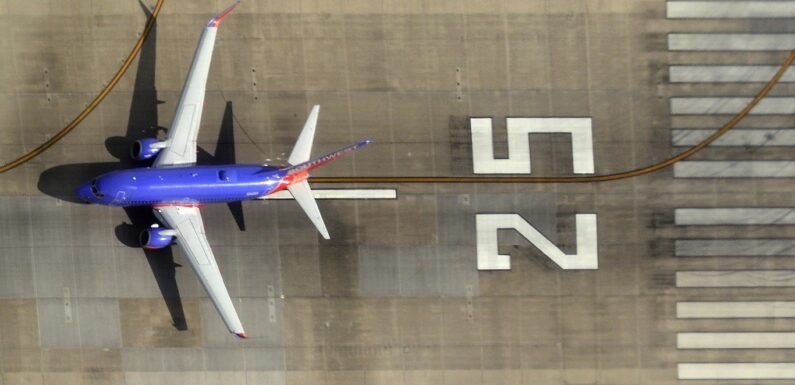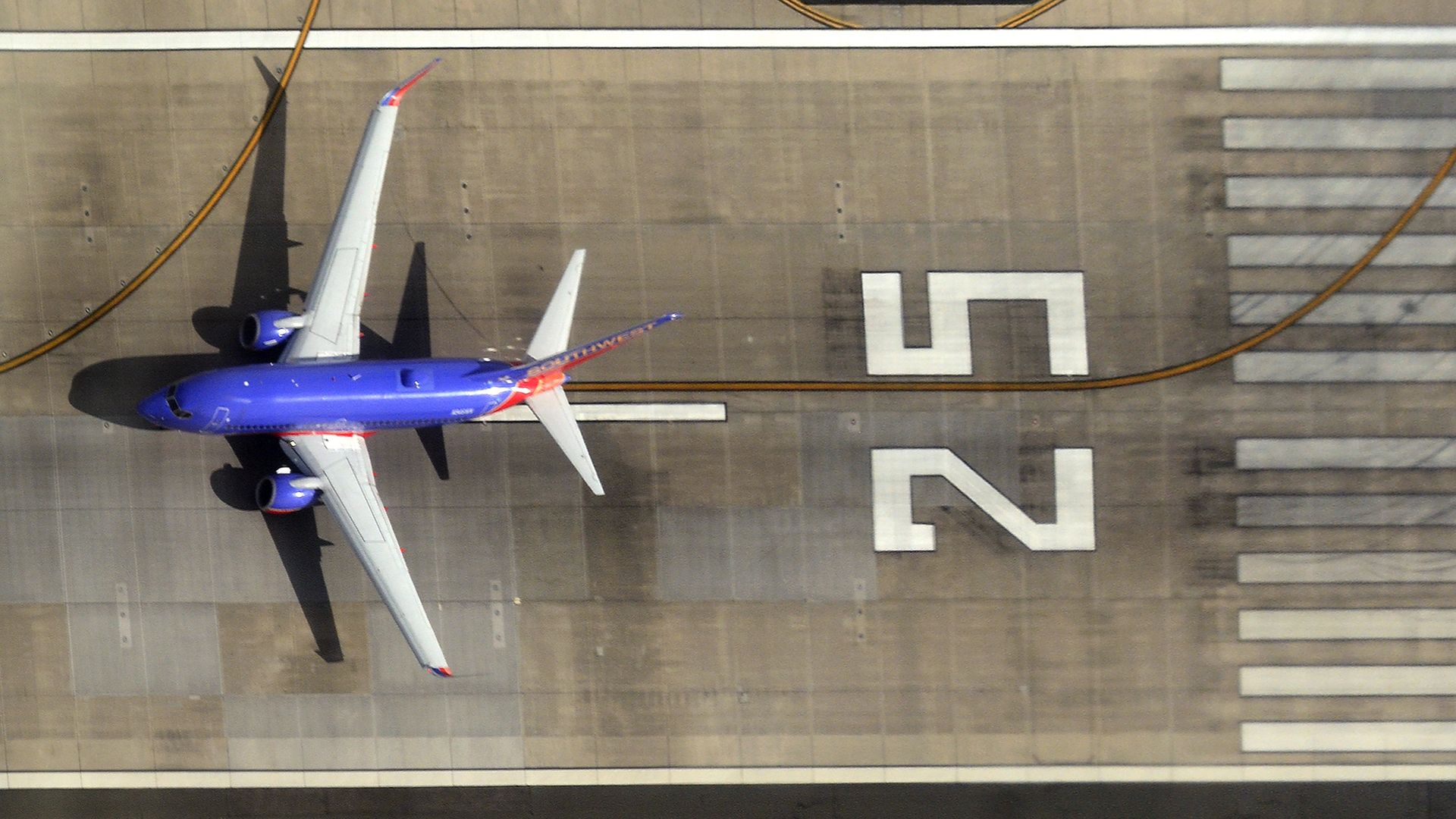
A plane prepares to take off from Denver International Airport on Sept. 7, 2016. Photo: Robert Alexander/Getty Images
New software that warns air traffic controllers if an inbound aircraft may be lining up to land on a taxiway rather than a runway has been installed at 43 major airports nationwide, the Federal Aviation Administration tells Axios.
Why it matters: Landing on a taxiway — essentially roads for aircraft that connect runways with terminals — can be a major safety hazard.
- There were 1,641 so-called "wrong surface events" between October 2016 and the end of last year, the FAA says — though the vast majority (83%) involved general aviation aircraft, not commercial planes.
How it works: The software, called ASDE-X Taxiway Arrival Prediction (ATAP), uses radar and other sensors to automatically tell if a plane appears to be lining up to land on a taxiway, rather than a runway.
- In such an event, the software alerts controllers to the potential problem. They can then communicate the issue to the incoming pilots.
Details: ATAP has been installed at Boston Logan International Airport, John F. Kennedy International Airport, Chicago O'Hare International Airport and more.
- It has "helped prevent more than 50 wrong-surface taxiway landings since its first implementation at Seattle-Tacoma International Airport in 2018," the FAA said in a blog post.
- There have been eight ATAP alerts so far this year.
Be smart: Runways have unique visual indicators — such as numbers, aiming points and the "piano key" threshold markings — and they're lit differently from taxiways at night.
- Yet taxiways often run parallel to runways, and pilots — especially those unfamiliar with their destination airport — can sometimes mistake the two.
Backstory: There have been a handful of notable taxiway landings by commercial pilots in recent years.
- In 2006, a Continental Airlines 757 landed on a taxiway at Newark Liberty International Airport. In 2009, a Delta Air Lines 767 did the same at Hartsfield–Jackson Atlanta International Airport. And in 2015, an Alaska Airlines 737 landed on a taxiway at Seattle-Tacoma.
- None of those incidents resulted in injuries. Yet taxiways aren't built to be landing surfaces for heavy jets, and they're often dotted with aircraft about to depart.
- To that point: In 2017, an Air Canada A320 nearly landed on a taxiway at San Francisco International Airport where four other planes were waiting to take off.
Of note: One notable pilot who accidentally landed on a taxiway? Harrison Ford.
Yes, but: None of the most recent headline-grabbing aviation safety incidents in recent months had to do with wrong-surface landings.
Source: Read Full Article
